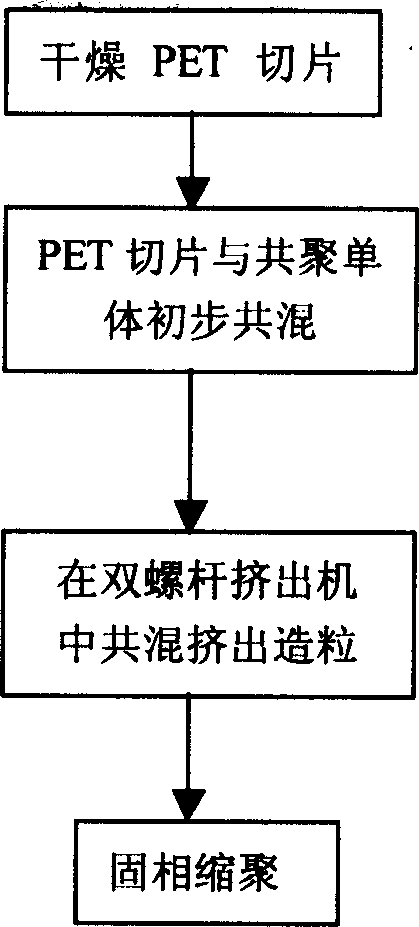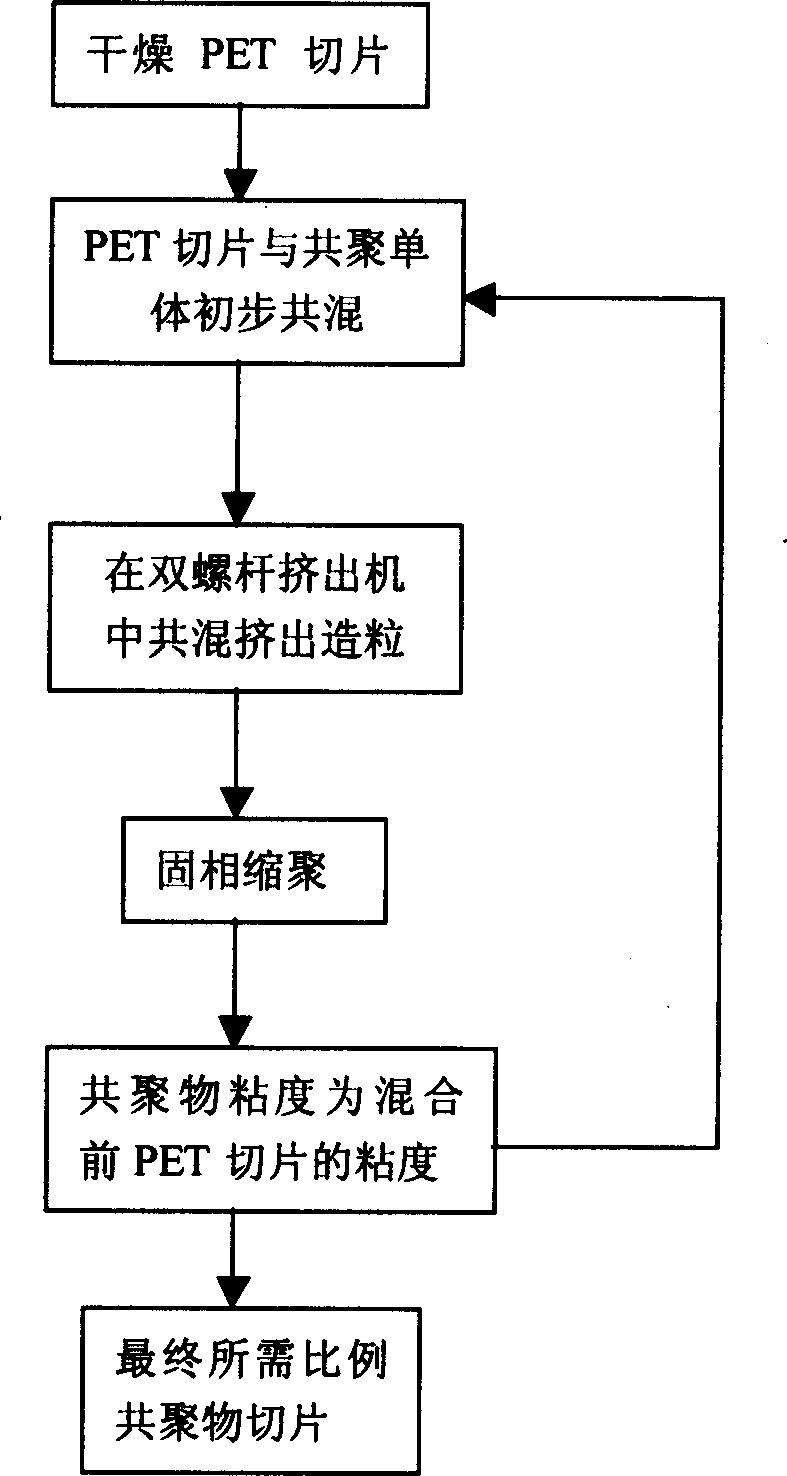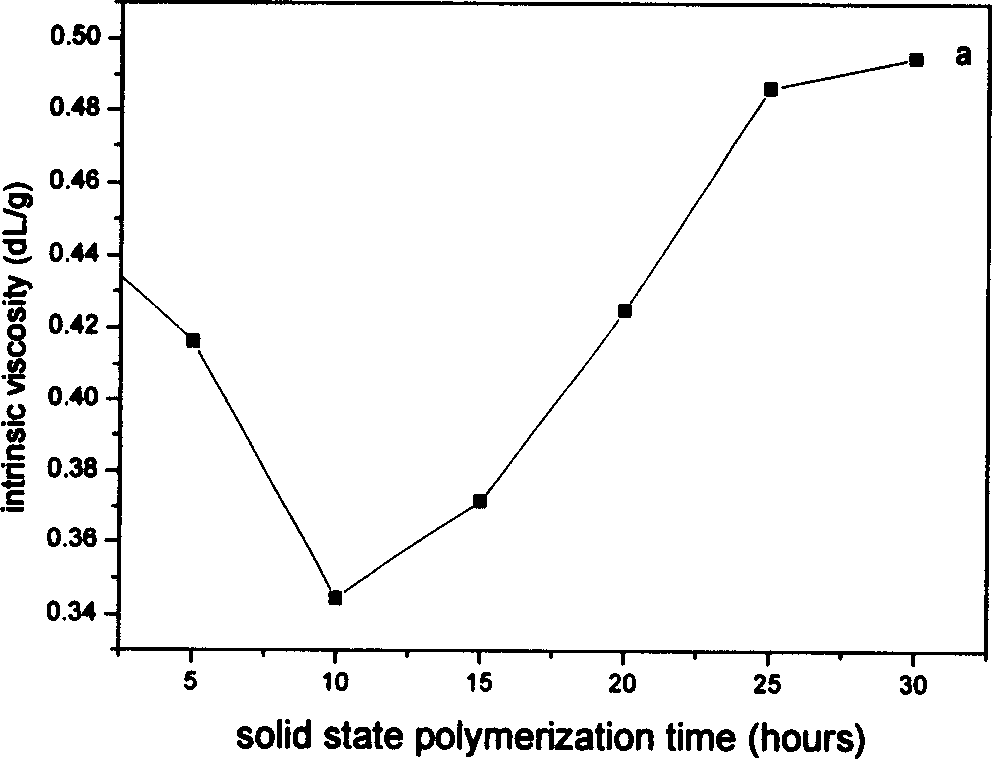Solid phase polymerization process for preparing ethylene telephthalate and aromatic diamine copolymer
A polyethylene terephthalate and aromatic binary technology, which is applied in the field of aromatic diamine copolymers, can solve the problems of expensive nucleating agents, poor dimensional stability, and slow crystallization speed. easy effect
- Summary
- Abstract
- Description
- Claims
- Application Information
AI Technical Summary
Problems solved by technology
Method used
Image
Examples
Embodiment 1
[0031] The synthesis of embodiment 1 PET-DDS (5mol%) copolymer
[0032]Dry the PET slices in an ordinary oven at 110°C for one day, and mix them with DDS for later use. The temperature of each zone of the twin-screw is set at 220, 260, 240, and 220° C., and the extruded mixture sample is granulated through a condensation water tank. The blend chips were dried at 60°C and pre-crystallized at 90°C for 4h. Solid state polymerization yields copolymer chips of desired viscosity in 5-30 hours. Solid state polymerization temperature: 210°C nitrogen protection (anti-oxidation, and take away small molecular by-products); nitrogen protection rapid sampling does not exceed 5 minutes.
[0033] sample
[0034] The synthesis and viscosity-increasing process of the resulting copolymers are shown in the attached image 3 shown.
Embodiment 2
[0035] The preparation of embodiment 2 PET-DDS (2mol%)
[0036] Put the PET slices in an ordinary oven at 90°C for 4 hours, then dry them in a vacuum oven at 120°C for 4 hours, mix them with DDS and set them aside. The temperature of each zone of the twin-screw is set at 220, 260, 244, and 230° C., and the extruded mixture sample is granulated through a condensation water tank. The blend slices were dried at 6°C and pre-crystallized at 90°C for 4h. Solid state polymerization yielded copolymer chips with the desired intrinsic viscosity of 0.64±0.02 in 40 hours. Solid phase polymerization temperature: 240°C nitrogen protection (anti-oxidation, and take away small molecular by-products).
Embodiment 3
[0037] Example 3 PET-DDS (2%) was used as a masterbatch to obtain PET-DDS (0.1mol%, 0.5mol% and 2mol%)
[0038] project
Pure PET
PET / 0.1%DD
S
PET / 0.5%DDS
PET / 2%DDS
Screw temperature / ℃
I
II
III
IV
metering pump and
Bending temperature / ℃
Cabinet temperature / ℃
Spinneret specification / mm*f
Spinning speed / m min -1
Heat roller temperature / ℃
Hot plate temperature / ℃
Denier (dtex) (10 4 )
Elongation at break (%)
Breaking strength (CN / dtex)
290
305
298
295
295
310
2.0
0.3*36
800
3.8
80
160
1.0515
7.201
2.44
290
305
298
295
295
310
2.0
0.3*36
800
3.8
80
135
1.0177
32.435
3.67
290
305
280
280
295
310
2.0
0.3*36
800
3.8
80
160
1...
PUM
 Login to View More
Login to View More Abstract
Description
Claims
Application Information
 Login to View More
Login to View More - R&D
- Intellectual Property
- Life Sciences
- Materials
- Tech Scout
- Unparalleled Data Quality
- Higher Quality Content
- 60% Fewer Hallucinations
Browse by: Latest US Patents, China's latest patents, Technical Efficacy Thesaurus, Application Domain, Technology Topic, Popular Technical Reports.
© 2025 PatSnap. All rights reserved.Legal|Privacy policy|Modern Slavery Act Transparency Statement|Sitemap|About US| Contact US: help@patsnap.com



